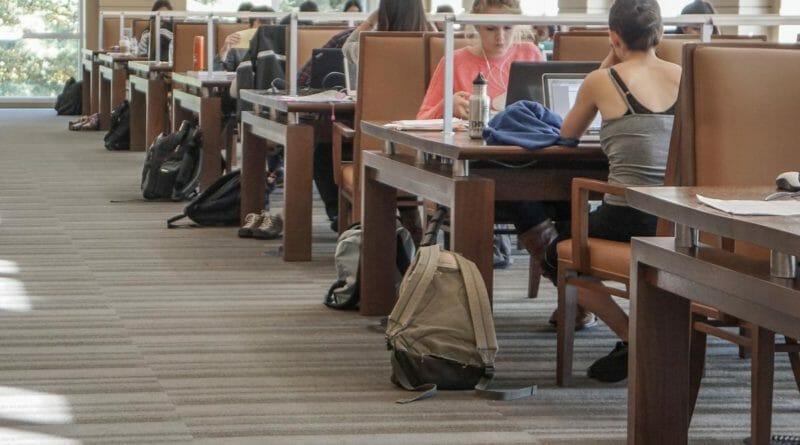STEM Companies Need To Start Recruiting High Schoolers
America is running out of workers with math and science skills. By 2029, the U.S. economy will need to fill 10.7 million jobs in the STEM fields of science, technology, engineering, and math — nearly 800,000 more than today.
This shortage of workers could delay or even forestall the next generation of breakthroughs — from vaccines and medical devices to advanced robotics systems and technologies that can mitigate climate change.
One key to averting this crisis is education. We need to expose students of all backgrounds to careers in STEM long before they choose colleges, declare majors, and apply for jobs. Companies can support that mission by beginning their recruiting efforts in high school, with internship programs for teenagers.
Young people today are largely unaware of the opportunities that await them in a STEM career. Nearly half of 11- to 17-year-olds are unsure what jobs are available in mathematics. More than 75% don’t know what the engineering profession entails.
This lack of familiarity is one reason why young adults disproportionately seek degrees in other fields. There’s also a significant amount of attrition. More than one-third of students who initially elect a STEM major switch to a different field of study by graduation.
STEM fields also have struggled to attract women and people from racially and ethnically underrepresented groups. Women account for 27% of the STEM workforce while holding 48% of all U.S. jobs. In 2017, workers from underrepresented groups made up 28% of the adult population but just 13% of the STEM workforce.
Reversing these trends will require a host of changes. Among them should be introducing girls and students from diverse backgrounds to careers in STEM earlier in their educations. Another is to create more equitable, accessible pathways to those STEM careers for historically underrepresented and underserved populations.
On-the-job experience while in high school could be just the nudge a young person needs to consider studying math and science in college. Knowing there’s a payoff in the form of a successful career could inspire a student not to give up after a tough calculus or physics course. It could also introduce a young woman or member of an underrepresented group to a professional who looks like them — and show them that they can succeed in math and science, too.
When we think of interns, we tend to think of college students. Approximately 60% complete at least one during their college tenure. Among that group, more than one-third say their internships “significantly” influenced their career trajectory.
There’s no reason why high schoolers shouldn’t have access to similar opportunities, particularly STEM-oriented ones. As of late, more do.
Stanford University, for instance, launched a summer internship program in 2019 that pairs engineering graduate students and professors with high school students to expose them to the field. The goal of the program is to show young people that there’s room for the humanities in STEM pursuits, too.
Dozens of other universities offer internship programs aimed at increasing interest in STEM among high schoolers of all socioeconomic and racial backgrounds.
Some companies have launched their own efforts. Lockheed Martin offers equal-opportunity software engineering internships for high schoolers. Microsoft has a similarly minded STEM internship program, as does Kaiser Permanente.
We’re no strangers to the cause. One of us works at STEMconnector, an organization whose mission is to build a diverse STEM workforce. The other works at Abbott, where we offer an internship program that partners with specific high schools to recruit talented students from historically marginalized groups. Abbott’s interest in this issue is personal — we’re building our workforce of the future. Countless other companies face the same challenge.
Corporate America should think innovatively to meet that challenge by creating a larger qualified pool of job candidates. For example, paying interns and making it possible for them to earn college credit — like Abbott’s high school program — can do wonders to attract students, especially those with limited financial resources. Providing transportation and workplace attire can also ensure that promising kids don’t hold off on applying to a professional internship because they think they can’t afford it, or won’t fit in.
Ninety-five percent of interns who go through Abbott’s high school program end up majoring in STEM. Some return to start their careers with us.
Companies need to recruit the next generation of scientists, engineers, and researchers. There are thousands of high school students out there, just waiting to help build our future. Let’s find them.
Source: Why STEM Companies Need To Start Recruiting High Schoolers (ibtimes.com)
Vildan Kehr is a divisional vice president of human resources at Abbott, a global health technology company. Abbey Myers is research manager at STEMconnector, the nation’s largest research-driven professional services company dedicated to developing a diverse, STEM-ready workforce.

